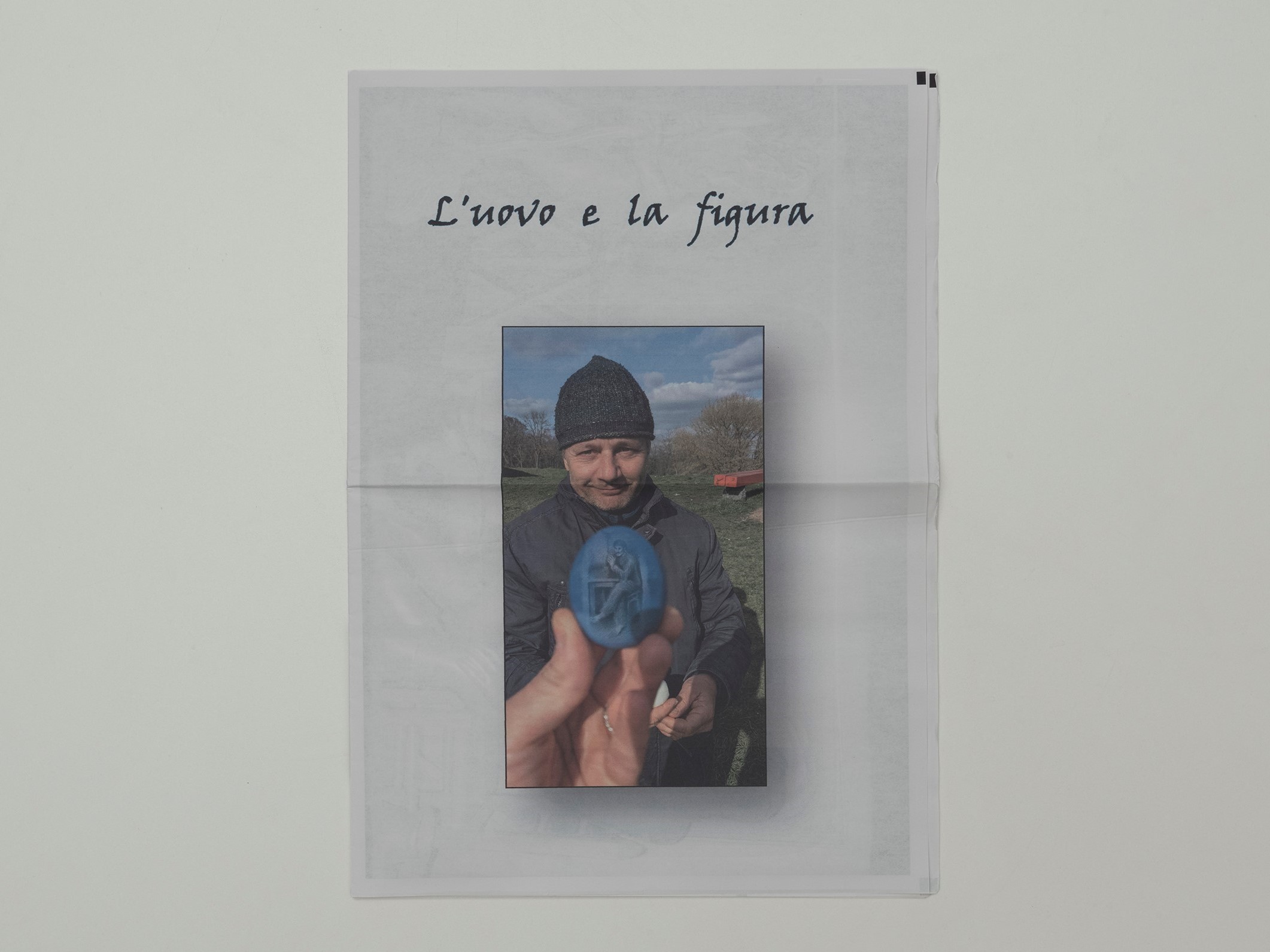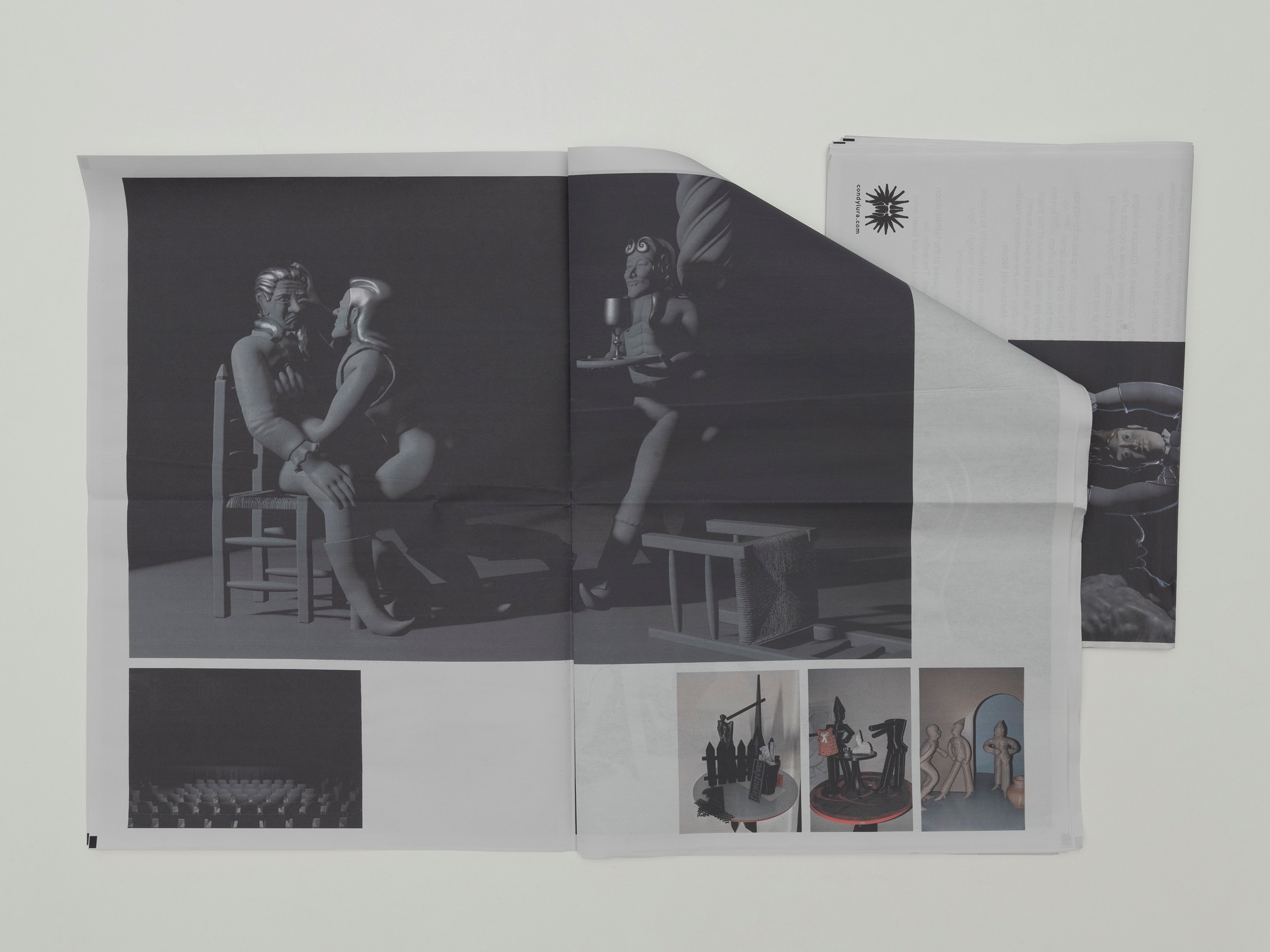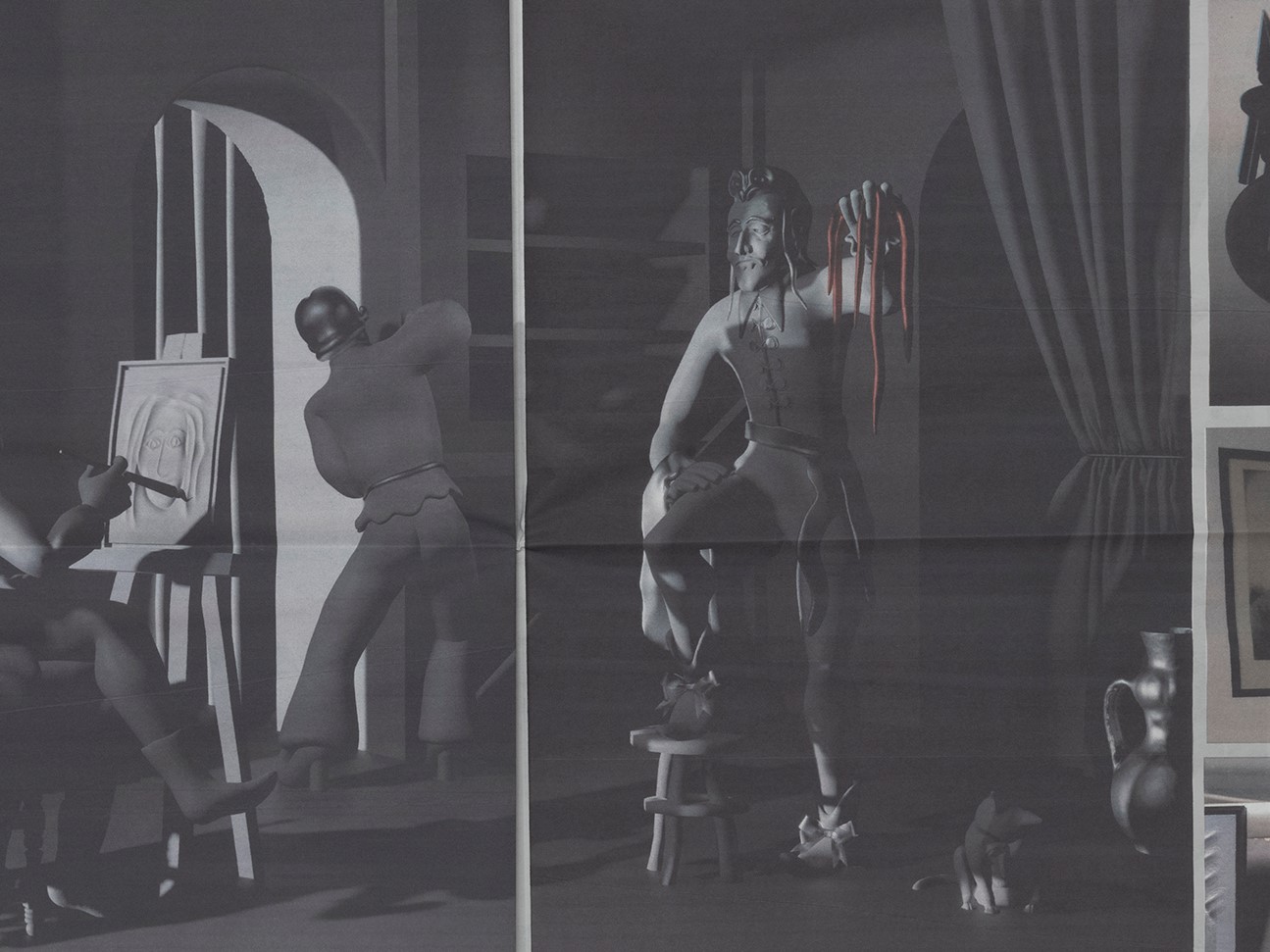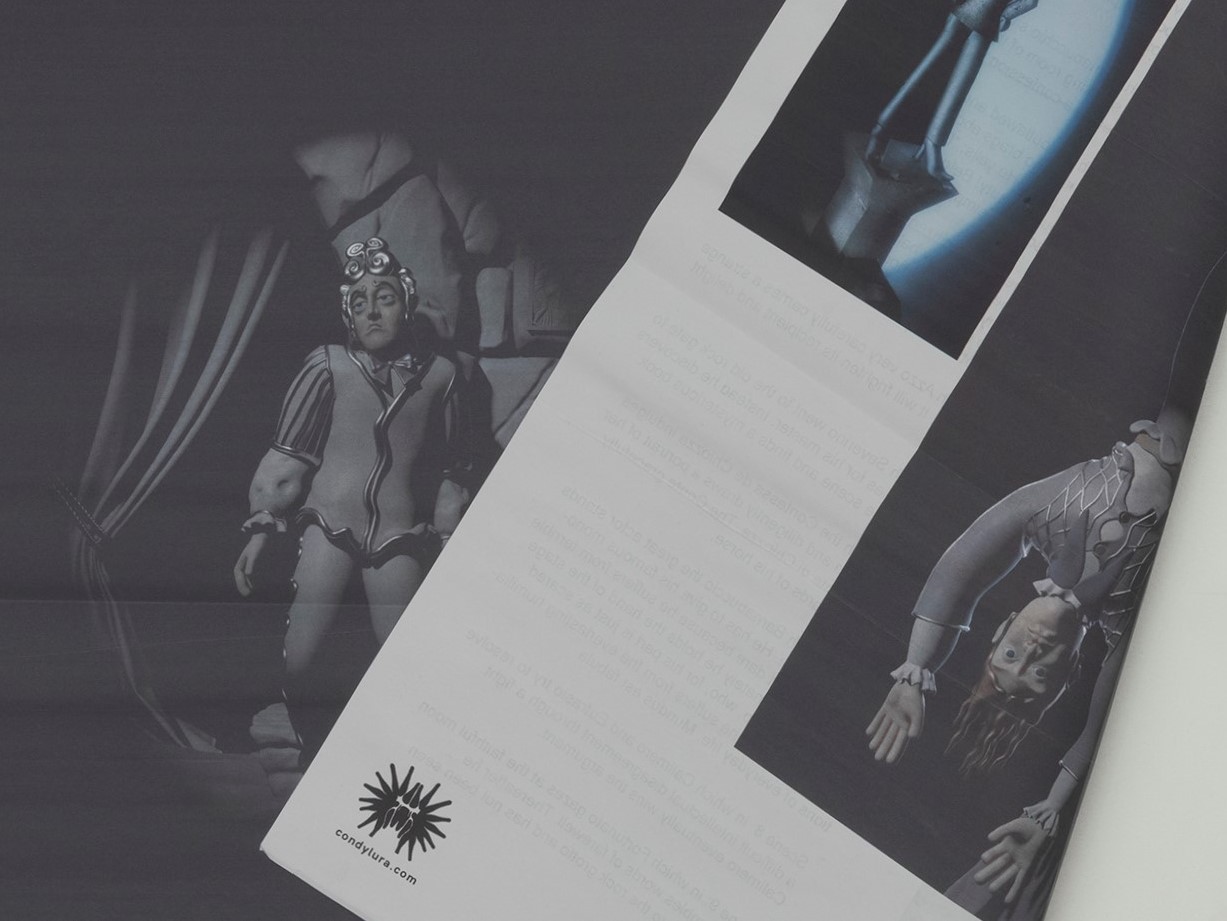




CONDYLURA02
WIELAND SCHÖNFELDER
2021
Edition of 100
20 pages
Broadsheet
6 €
To buy a copy contact us via email
Condylura publishes a free digital copy at sold-out
*
Condylura dug from Bologna to Berlin, to find out that visual art may be bringing to surface an unheard monologue. “L'uovo e la figura”, a libretto introducing Wieland Schönfelder’s upcoming exhibition in Portugal.
TEXT
An unknown and not-yet published Italian theatre play from the 18th century gives us an insight
into the worldmaking process of the artist Wieland Schönfelder, morphing the publication into a
libretto that may conceal a manifesto.
Confessions of tormented flesh, calls to political action, crime scenes, indulgences, intellectual fights and humiliations, all render a fragmented mosaic of this coral play, brought together by characters with Italian Baroque names: Severino, Azzo, Barnabuccio, Conte and Contessa de Chiozza. Nomen est omen: through the use of puns the artist hints at the political core of the piece, Italian speakers will immediately recognise the play on words “sederino” (little ass) and “cazzo” (dick). Playful, ironic, yet poignant; an attempt of emasculation gives voice to a heartfelt monologue against social norms oppressing bodies and gender identities. Chechov’s gun does not fire, but still triggers a process.
The libretto opens with a quote from Barnabuccio’s monologue that distills a theory on the politics of aesthetics, the egg and the figure: Freedom now rules beauty. Nature provided beauty of form, the soul provides the beauty of play. Now we also know what grace is. Grace is beauty of form under freedom’s influence, the beauty of those appearances that the person determines.
Another Latin motto, Mundus est fabula, found in the play’s index, may provide further understanding to the work of Wieland Schönfelder. Almost a spell, but a rational one, as it appears meta-inscribed in the portrait of Descartes by Jan Baptist Weenix. It’s the cogito, the discourse on method, which does not propose itself as a system or model, but as fable, to stage his personal journey, lit by doubt towards other fables. Maurice Blanchot quotes the painting discussing the philosophy of Nietzsche and the idea of the world as text, of the power of writing as unveiling through the veil of metaphor: For what is a text? A set of phenomena that hold themselves in view; and what is writing if not bringing into view, making appear, bringing to the surface?
L’uovo e la figura is capable of exhibiting even the viscera: the reality that lies beneath the surface – because in this tale body and soul are simply words of a changing reality – or perhaps a device, the red herring, to get us lost among the fragmented paths of the narrative. We may though keep following the path suggesting that the worlds of the characters and of the artist may be one and the same. Descartes’ motto indeed appears in scene 7, when Barnabuccio fails to deliver his monologue because of a terrible case of stage fright, which causes him to seek the hand of the scenographer Quinto. Having previously worked as both a theatre actor and a set designer, Schönfelder’s practice manifests a constant confrontation of the boundaries between theatre and visual arts (Barnabuccio and Quinto!), blurring the scenic and the exhibition frames by creating weird, manifestly staged worlds, within which are often inquired notions coming from political theory, aesthetics and metaphysics – to be discussed by wrestling. The fable meta-revolves, and behind the scenes is revealed the act in which the gesture absents itself in the object. Through the veil of the play, Schönfelder unveils his creative act: to bring to the surface the unheard monologue of Barnabuccio. In the end one may choose the depths of Plato’s grotto, veiling through fable, to unveil through metaphor.
L’uovo e la figura, anachronism for the sake of grace. Because one can always respond to the rope with a dance pose. Flipping is believing.
C
Confessions of tormented flesh, calls to political action, crime scenes, indulgences, intellectual fights and humiliations, all render a fragmented mosaic of this coral play, brought together by characters with Italian Baroque names: Severino, Azzo, Barnabuccio, Conte and Contessa de Chiozza. Nomen est omen: through the use of puns the artist hints at the political core of the piece, Italian speakers will immediately recognise the play on words “sederino” (little ass) and “cazzo” (dick). Playful, ironic, yet poignant; an attempt of emasculation gives voice to a heartfelt monologue against social norms oppressing bodies and gender identities. Chechov’s gun does not fire, but still triggers a process.
The libretto opens with a quote from Barnabuccio’s monologue that distills a theory on the politics of aesthetics, the egg and the figure: Freedom now rules beauty. Nature provided beauty of form, the soul provides the beauty of play. Now we also know what grace is. Grace is beauty of form under freedom’s influence, the beauty of those appearances that the person determines.
Another Latin motto, Mundus est fabula, found in the play’s index, may provide further understanding to the work of Wieland Schönfelder. Almost a spell, but a rational one, as it appears meta-inscribed in the portrait of Descartes by Jan Baptist Weenix. It’s the cogito, the discourse on method, which does not propose itself as a system or model, but as fable, to stage his personal journey, lit by doubt towards other fables. Maurice Blanchot quotes the painting discussing the philosophy of Nietzsche and the idea of the world as text, of the power of writing as unveiling through the veil of metaphor: For what is a text? A set of phenomena that hold themselves in view; and what is writing if not bringing into view, making appear, bringing to the surface?
L’uovo e la figura is capable of exhibiting even the viscera: the reality that lies beneath the surface – because in this tale body and soul are simply words of a changing reality – or perhaps a device, the red herring, to get us lost among the fragmented paths of the narrative. We may though keep following the path suggesting that the worlds of the characters and of the artist may be one and the same. Descartes’ motto indeed appears in scene 7, when Barnabuccio fails to deliver his monologue because of a terrible case of stage fright, which causes him to seek the hand of the scenographer Quinto. Having previously worked as both a theatre actor and a set designer, Schönfelder’s practice manifests a constant confrontation of the boundaries between theatre and visual arts (Barnabuccio and Quinto!), blurring the scenic and the exhibition frames by creating weird, manifestly staged worlds, within which are often inquired notions coming from political theory, aesthetics and metaphysics – to be discussed by wrestling. The fable meta-revolves, and behind the scenes is revealed the act in which the gesture absents itself in the object. Through the veil of the play, Schönfelder unveils his creative act: to bring to the surface the unheard monologue of Barnabuccio. In the end one may choose the depths of Plato’s grotto, veiling through fable, to unveil through metaphor.
L’uovo e la figura, anachronism for the sake of grace. Because one can always respond to the rope with a dance pose. Flipping is believing.
C
